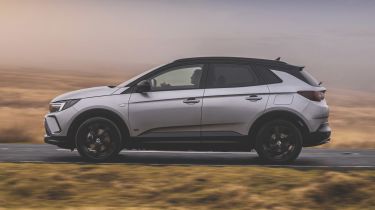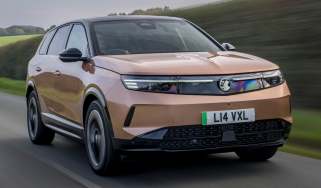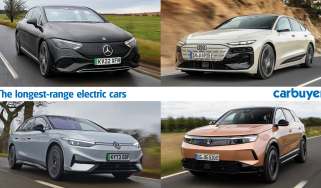Vauxhall Grandland (2017-2024) - MPG, running costs & CO2
Blending strong practicality with decent economy, the Vauxhall Grandland should be cheap to run
The Vauxhall Grandland’s engine range offers something for almost everyone, with two petrols and one diesel model, as well as a pair of powerful, yet efficient plug-in hybrids.
The entry-level 1.2-litre turbocharged petrol engine officially returns up to 45.6mpg when combined with the six-speed manual gearbox, and is claimed to manage up to 44.1mpg if you choose the automatic. Emissions for both the manual and automatic range from 140g/km to 147g/km.
Introduced later on, there’s also the ‘Hybrid’ badged version of the 1.2-litre petrol, with 134bhp and mild-hybrid technology, that only comes with a unique six-speed automatic gearbox. This pushes official fuel efficiency up to 51.3mpg, while emissions shrink to 127g/km, which gives it a sizeable advantage over the petrol version above. During our testing we averaged 46.2mpg over a mixture of roads.
If you cover more than around 12,000 miles a year or plan on using your Grandland to tow, you’ll probably want the 1.5-litre diesel engine. This engine officially returns up to 51.3mpg, with the standard eight-speed automatic gearbox and emits 144g/km of CO2, so on paper at least, it’s no cheaper to run than the mild-hybrid petrol.
Company car drivers will be best off looking at one of the two plug-in hybrids as these incur much lower Benefit in-Kind company car tax rates, emitting just 30-31g/km. Both offer a range of around 35 miles which means shorter commutes can be achieved on electric power alone, drastically cutting running costs. You can top-up every night with a three-pin plug, but Vauxhall also offers a faster 7kW wallbox charger for around £500. Officially, both PHEVs manage fuel economy of around 200mpg, but to get close to this in real-world driving, you’ll need to keep the battery charged up, and take mainly shorter trips.
More reviews
All regular petrol and diesel versions of the Grandland cost the standard rate of VED (road tax), with the hybrid models liable for the discounted rate. For models that cost above £40,000 (including options and before discounts) you’ll be required to pay the additional surcharge for the first five times you renew the tax.
Insurance groups
The entry-level trim is the cheapest to insure, sitting in group 15. GS Line and Ultimate are the highest, but not by a great deal, with groups of 17-22. The Grandland PHEV is slightly more expensive to insure, starting in group 23 in GS Line trim. These are somewhat lower ratings than the Nissan Qashqai, which sits in group 17 with an entry-level petrol engine.
Warranty
Vauxhall’s three-year/60,000-mile warranty is standard for the industry – nothing more, nothing less. This matches the Qashqai and Skoda Karoq, but the Hyundai Tucson gets a five-year/unlimited-mileage warranty, while the Kia Sportage comes with a seven-year/100,000-mile warranty as standard.
Servicing
Better news here: Vauxhall’s service plans are reasonably priced and will make budgeting for maintenance easy. Costing around £20 per month, Vauxhall Care looks after the first three services, three years of roadside assistance and the cost of the first MOT.
Which Is Best?
Cheapest
- Name1.2 Hybrid 145 Design 5dr e-DCT6
- Gearbox typeAuto
- RRP£35,795
Most Economical
- Name1.2 Hybrid 145 Design 5dr e-DCT6
- Gearbox typeAuto
- RRP£35,795
Fastest
- Name1.2 Hybrid 145 Design 5dr e-DCT6
- Gearbox typeAuto
- RRP£35,795















